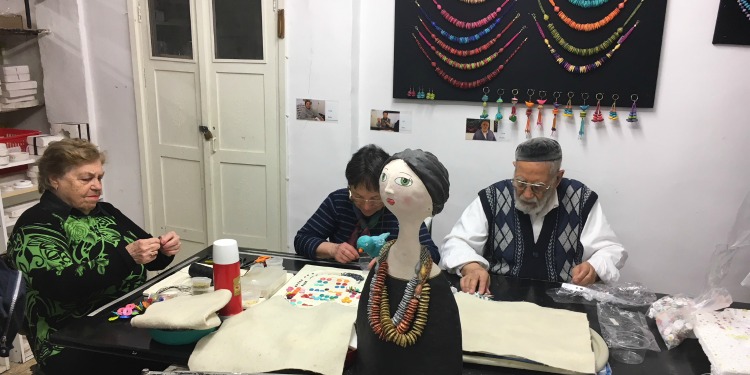The Only Way to Survive
The Fellowship | May 16, 2018

“And now a prayer – or rather, a piece of advice: let there be comradeship among you. We are all brothers, and we are all suffering the same fate. Help one another. It is the only way to survive.” – Elie Wiesel, Night
When The Fellowship tour of Israel visited Yad Vashem, one of my first encounters of the Holocaust came to mind: Elie Wiesel’s novel Night, based on his own experiences as a Jew deported and persecuted by the Nazis. And as our group gathered at one of the many amazing Fellowship-supported projects we would visit during our trip, the above quote came to mind.
Why, you ask, would a project funded by a bridge-building organization harken the darkest chapter in history? Well, the project in question is called Yad LaKashish, which is Hebrew for “Lifeline for the Old.”
We walked into a garden apartment area in Jerusalem, where we met Rabbi Eckstein. On the wall was the place’s name, as well as this quote from Psalm 71: “Do not forsake me when I grow old. When my strength fails do not abandon me.” The Rabbi quickly told us about what we were going to see, who we were going to meet, and why this project is so important to him.
Israel is a nation of immigrants, he explained, many of whom do not speak the language, made aliyah (immigrated) with no savings or pensions, had no family or loved ones to keep them company, and had no prospects in their new home. In addition, he said, many of them are Holocaust survivors from Eastern Europe, still suffering after having suffered so much.
While the world often focuses on winners, the Rabbi said, The Fellowship instead focuses on “the least of these,” and the many suffering elderly in Israel are exactly that. So, Yad LaKashish is there to help, providing them money, hot meals, bus passes, and dental care. We were then led into the facility’s various areas to see just how this project works.
The elderly people who come to the project each day are taught high-end crafts. In each room, sweet people from many different nations – Russia, Ukraine, Ethiopia, and others – talked with one another in their native tongue as they worked at making delightful things.
In the first room we toured, a group of Eastern European women and a pair of Ethiopian men worked with ceramics, crafting Judaica and jars and hearts, and painting crafts that had been fired. Rabbi Eckstein greeted the two Ethiopians in their native language, Amharic, which tickled these two men who had come to Israel from a land so far away. All of the workers smiled when we greeted them with “Shalom” and “Boker tov” (good morning).
We then went to a metal-working area, where elderly men filed and cut, shaped and shined. They made menorahs (traditional Jewish candle holders), charity boxes, pendants, and charms, taking plain metal and making magic with it. Just as magical were the feelings of warmth and camaraderie shared in these workshop rooms, feelings that no doubt replaced the loneliness they once felt in their apartments or on the Jerusalem streets.
Next was the silk workshop. There, elderly Jewish workers drew and painted intricate and colorful designs and graphics on scarves and prayer shawls, each finished work a handmade piece of art. Just as artful were the cloth and knitted items we watched being made in yet another room.
After we were done touring the workshops, we had an opportunity to visit the Yad LaKashish gift shop. There, the fruits of these precious old folks’ labors were for sale. Some bought prayer shawls for members of their churches back home. One woman purchased a beautiful Hanukkah menorah whose base was a ceramic, hand-painted Noah’s Ark, the colorful animals no doubt ready to spread holiday cheer. Another man purchased a knit yarmulke (the traditional Jewish skullcap worn by men) that he would wear to pray at the Western Wall later that day (a story to come soon!). And I walked out with an armful of fun and one-of-a-kind gifts for my fun and one-of-a-kind girls waiting for me back in the United States.
And while all of us who visited Yad LaKashish are from the U.S., and the men and women who work there and fellowship there are from other lands, it was this opportunity to, as Elie Wiesel once wrote, “help one another” because “we are all brothers” that made this visit a particular highlight of our one-of-a-kind tour of the Holy Land.
Read the previous posts about the tour, including visits to Yad Vashem and the Israel Museum.
